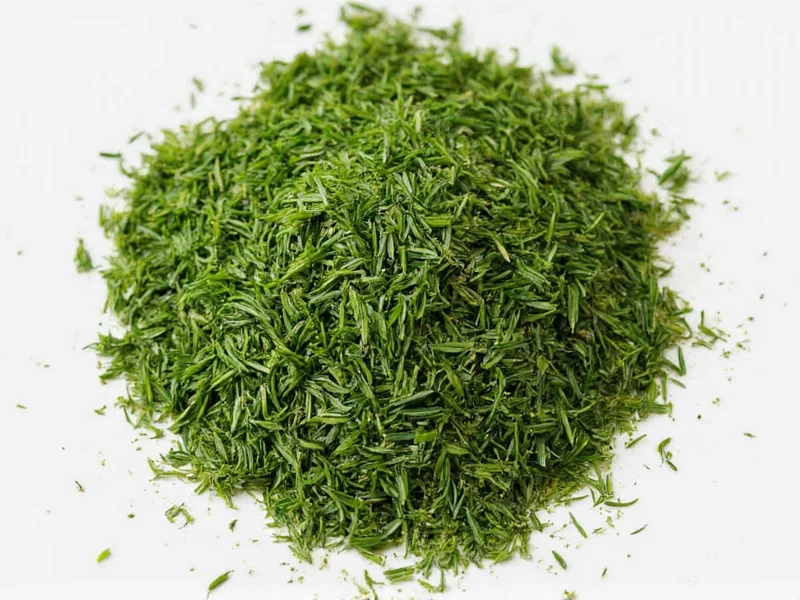When you're in the middle of cooking and realize you're out of dill spice, knowing the right alternative can save your recipe. Dill's distinctive flavor—slightly sweet with grassy, anise-like notes—makes it challenging to replace perfectly, but several options work well depending on your dish. Understanding dill's flavor profile is key to selecting the best substitute for dill spice in your specific culinary application.
Understanding Dill's Unique Flavor Profile
Dill spice (made from dried dill seeds) offers a more concentrated, slightly bitter flavor compared to fresh dill weed. It contains subtle notes of caraway, lemon, and anise that contribute to its distinctive taste. When seeking a dill seed replacement in recipes, consider whether you need the seed's earthy bitterness or the herb's brighter notes—this distinction determines which substitute will work best for your specific dish.
Top 5 Substitutes for Dill Spice
Not all dill alternatives work equally well in every situation. Here's how the top options compare:
| Substitute | Flavor Comparison | Best For | Conversion Ratio |
|---|---|---|---|
| Fresh dill weed | More delicate, grassier flavor | Fish, salads, dips, finishing dishes | 3 parts fresh dill = 1 part dill spice |
| Tarragon | Stronger anise/licorice notes | Egg dishes, chicken, vinegars | 1:1 (use slightly less) |
| Fennel fronds | Sweeter, milder anise flavor | Fish, roasted vegetables, salads | 1:1 (fresh) or 2:1 (dried) |
| Caraway seeds | Earthier, more pungent | Soups, stews, breads | 1:1 (use sparingly) |
| Dill pickle juice | Vinegary, briny dill flavor | Pickling, dressings, marinades | Replace liquid component |
Choosing the Right Substitute by Dish Type
The best dill replacement for salmon recipes differs from what works well in pickling or breads. Consider these specific recommendations:
Fish and Seafood Dishes
For grilled or baked fish, fresh dill weed provides the closest flavor match. When unavailable, tarragon works well but use about 25% less to avoid overpowering the delicate fish flavor. Fennel fronds make an excellent garnish alternative with their similar feathery appearance and complementary flavor.
Pickling and Preserving
When looking for a substitute for dill in pickling recipes, dill pickle juice serves as the most practical alternative. For every cup of vinegar in your brine, replace ¼ cup with dill pickle juice. Alternatively, use fresh dill heads (the flower clusters) which contain concentrated dill flavor. Tarragon can work in a pinch but will noticeably change the pickle's flavor profile.
Dips, Dressings, and Cold Dishes
For tzatziki, ranch dressing, or potato salad, create a custom blend using 2 parts parsley, 1 part celery seed, and a pinch of lemon zest. This homemade dill substitute mimics dill's fresh, grassy notes without the distinctive anise flavor. Start with half the amount of dill called for in your recipe, then adjust to taste.
When Substitutes Fall Short
Some recipes simply won't work with dill substitutes. Traditional Scandinavian gravlax, certain Eastern European borscht variations, and authentic dill pickles rely on dill's specific chemical compounds that alternatives can't fully replicate. In these cases, consider modifying your recipe rather than forcing a substitution that will compromise the dish's authenticity.
Creating Your Own Dill Substitute Blend
For the most versatile dill spice alternative for cooking, make this simple blend:
- 2 tablespoons dried parsley
- 1 tablespoon celery seed (finely ground)
- 1 teaspoon dried lemon zest
- ½ teaspoon fennel seed (optional for stronger anise note)
Mix thoroughly and store in an airtight container. Use 1:1 in place of dill spice. This blend works particularly well as a substitute for dill in potato salad and other cold dishes where dill's fresh flavor shines.
Pro Tips for Successful Substitution
Add dried substitutes early in cooking to allow flavors to develop, while fresh alternatives should be added near the end. When using tarragon as a dill weed replacement in recipes, remember its stronger flavor means you should start with half the amount and adjust to taste. For the best results with any substitute, always taste as you go and adjust seasonings accordingly.
Frequently Asked Questions
Can I use dill weed instead of dill spice?
Yes, but use three times the amount of fresh dill weed compared to dill spice. For dried dill weed, use double the amount. Dill weed has a more delicate flavor than the more concentrated dill spice (made from seeds), so you'll need more to achieve similar flavor intensity.
What's the best substitute for dill in pickles?
Dill pickle juice works best as a liquid substitute in pickling brine—replace ¼ cup of vinegar with pickle juice per cup of brine. For whole pickles, fresh dill heads (the flower clusters) provide the most authentic flavor. Tarragon can work but will create a noticeably different flavor profile.
How do I substitute dill in salmon recipes?
For salmon, fresh dill weed is the closest substitute (use 3x the amount of dill spice). If unavailable, try fennel fronds which have a similar appearance and complementary flavor. Tarragon works but use only half the amount to avoid overpowering the fish. A blend of parsley and a pinch of lemon zest also works well as a finishing garnish.
Can I use caraway instead of dill?
Caraway can work as a substitute in some applications like breads or hearty soups, but it has a stronger, earthier flavor than dill. Use only half the amount of caraway compared to dill spice, as its flavor is more intense. It's not recommended for fish dishes or delicate recipes where dill's lighter notes are essential.
What's a good non-herb substitute for dill?
For those avoiding herbs, try celery seed (use ¼ the amount of dill spice) combined with a squeeze of lemon juice. In creamy dishes, a small amount of horseradish (⅛ teaspoon per teaspoon of dill) can provide a similar sharpness. For pickling, dill pickle juice serves as the most practical non-herb alternative.











 浙公网安备
33010002000092号
浙公网安备
33010002000092号 浙B2-20120091-4
浙B2-20120091-4